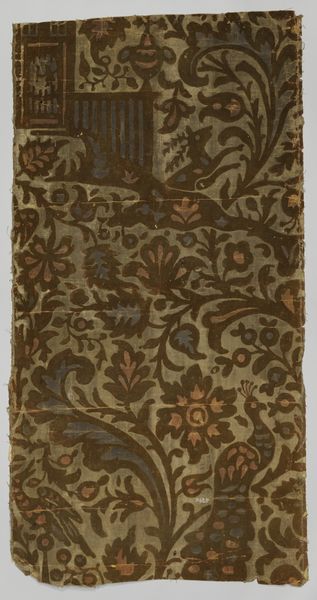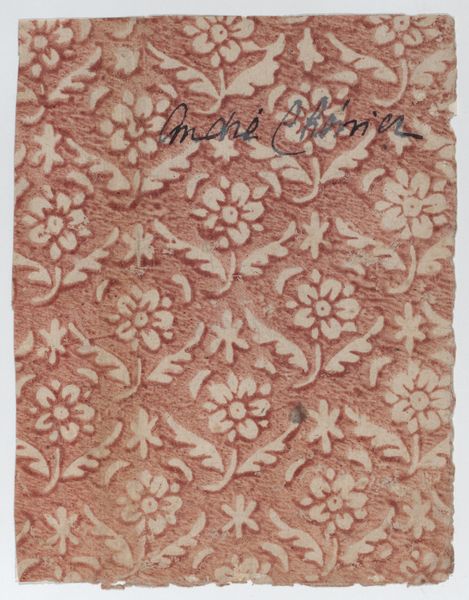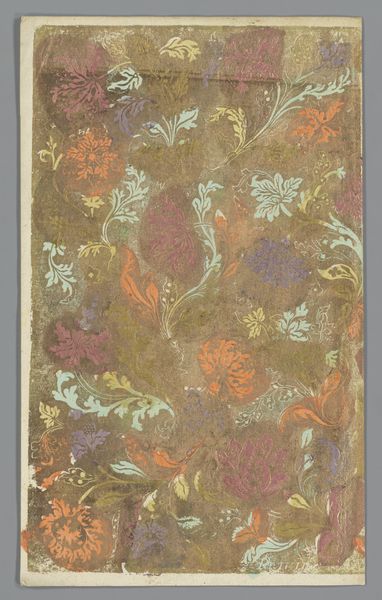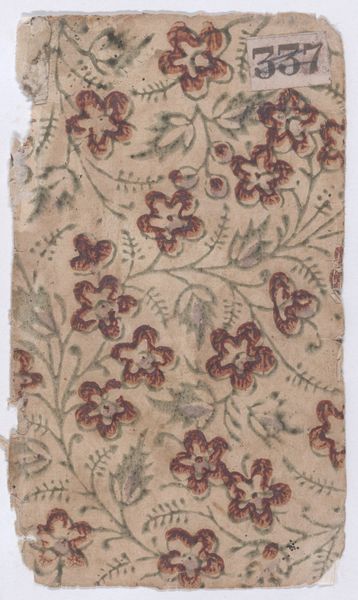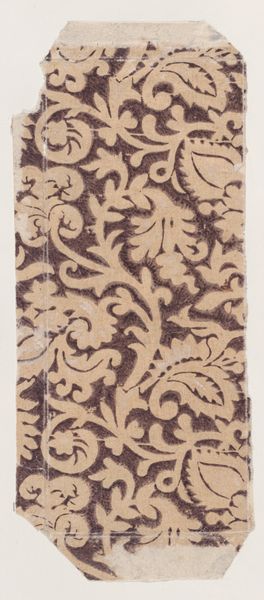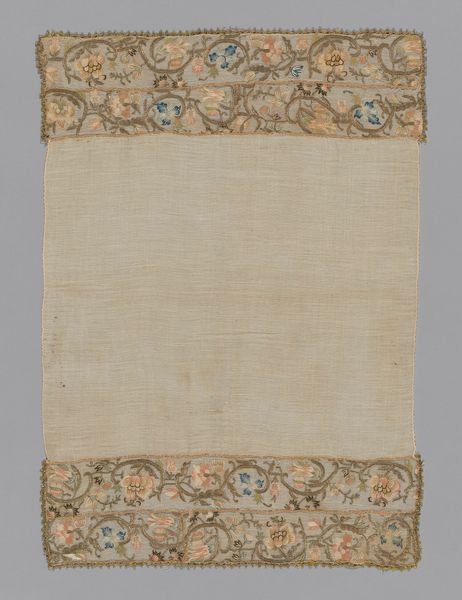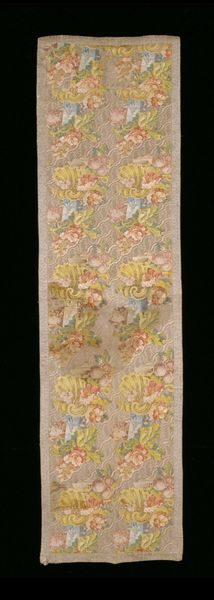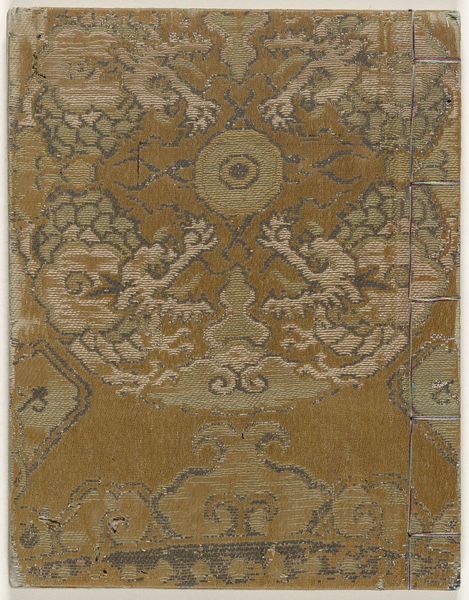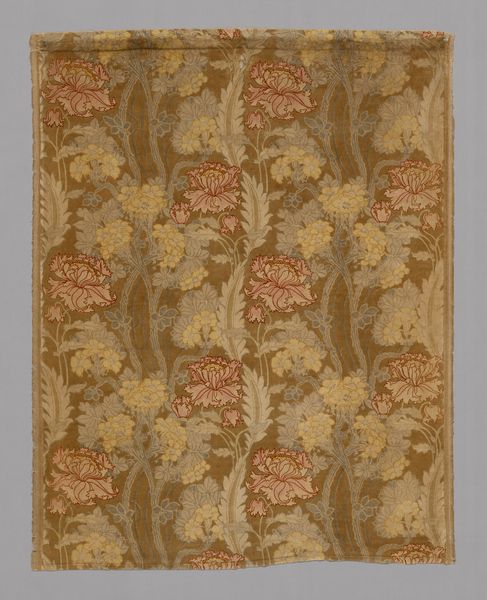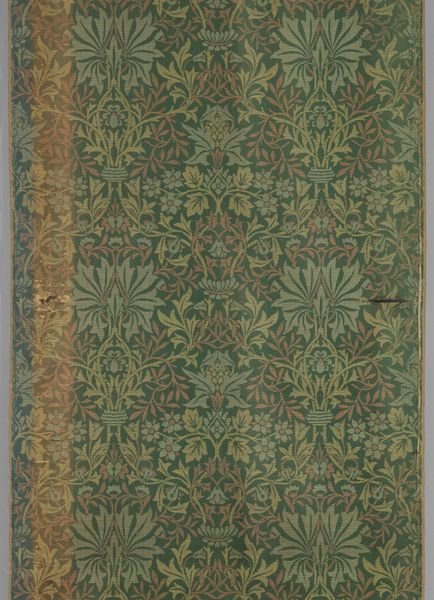
silk, weaving, textile
#
silk
#
weaving
#
textile
#
decorative-art
Dimensions: 32 1/2 x 20 3/4 in. (82.6 x 52.7 cm)
Copyright: Public Domain
Curator: I find myself immediately drawn into the soft, aged coloration and subtle opulence of this "Panel" made of silk. It is from the 18th century and currently residing at the Minneapolis Institute of Art. The piece exudes elegance even through the aged hues of its material. Editor: Yes, my immediate impression is of faded grandeur. One can almost hear echoes of the past rustling through its threads. Considering the social history woven within this textile—who made it and for whom? Curator: It's listed as made by an anonymous author. A look at the process involved is crucial. Imagine the skilled labor needed to produce this complex weave in the 18th century. The weavers would have worked long hours, transforming raw silk into a symbol of status for some aristocratic household. Editor: Precisely! Silk itself was a global commodity tied to colonial economies and power dynamics. A panel like this was not merely decorative; it communicated social status, wealth, and potentially, the exploitation upon which that wealth was built. Who would display this silk textile panel, and what was the occasion of the work to begin with? Curator: Absolutely, that's a crucial point. Considering the baroque style patterns, featuring lush foliage, such textiles were often integrated into lavish interior designs of wealthy elite households or even ecclesiastical contexts. Editor: Think of the gendered nature of the textile industry then as well—the labor predominantly done by women, yet often unseen and unacknowledged. Examining this piece can provide insight into labor history and the broader cultural narrative surrounding craftsmanship. Curator: Right. And how might this surviving piece shape consumption practices or our relationship to "antique" silk? How does a damaged piece become an object on display? The display itself is a form of consumption. Editor: We are viewing an aestheticized object, which invites contemplation on labor, global trade, gendered workforces, class differences, and historical inequities that were embedded in such productions. I find its presence here raises interesting points about the endurance and transmutation of social meaning through time. Curator: Indeed, each frayed edge is a testament to its age and a marker of the lives and conditions of those who came into contact with the piece, either by creating, owning, consuming or eventually viewing it. Editor: It's a material witness. Thank you for such astute analysis of this beautiful textile, underscoring the ways this 'Panel' serves as an intricate historical and artistic marker of those times.
Comments
No comments
Be the first to comment and join the conversation on the ultimate creative platform.
